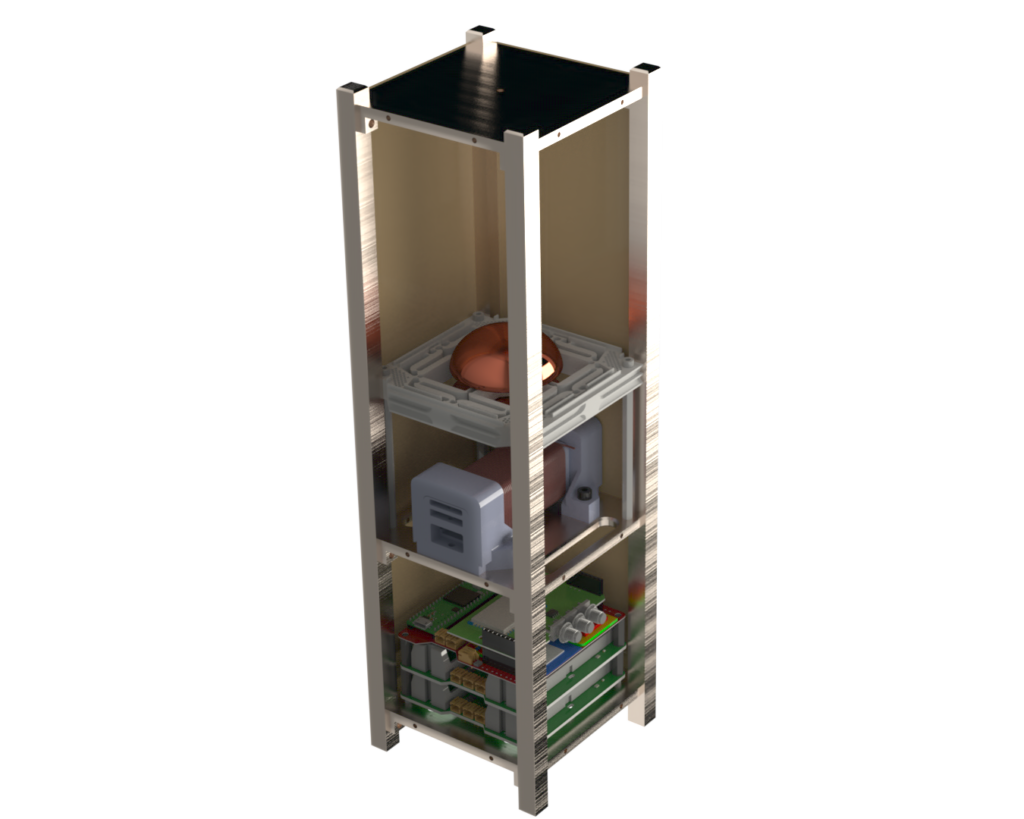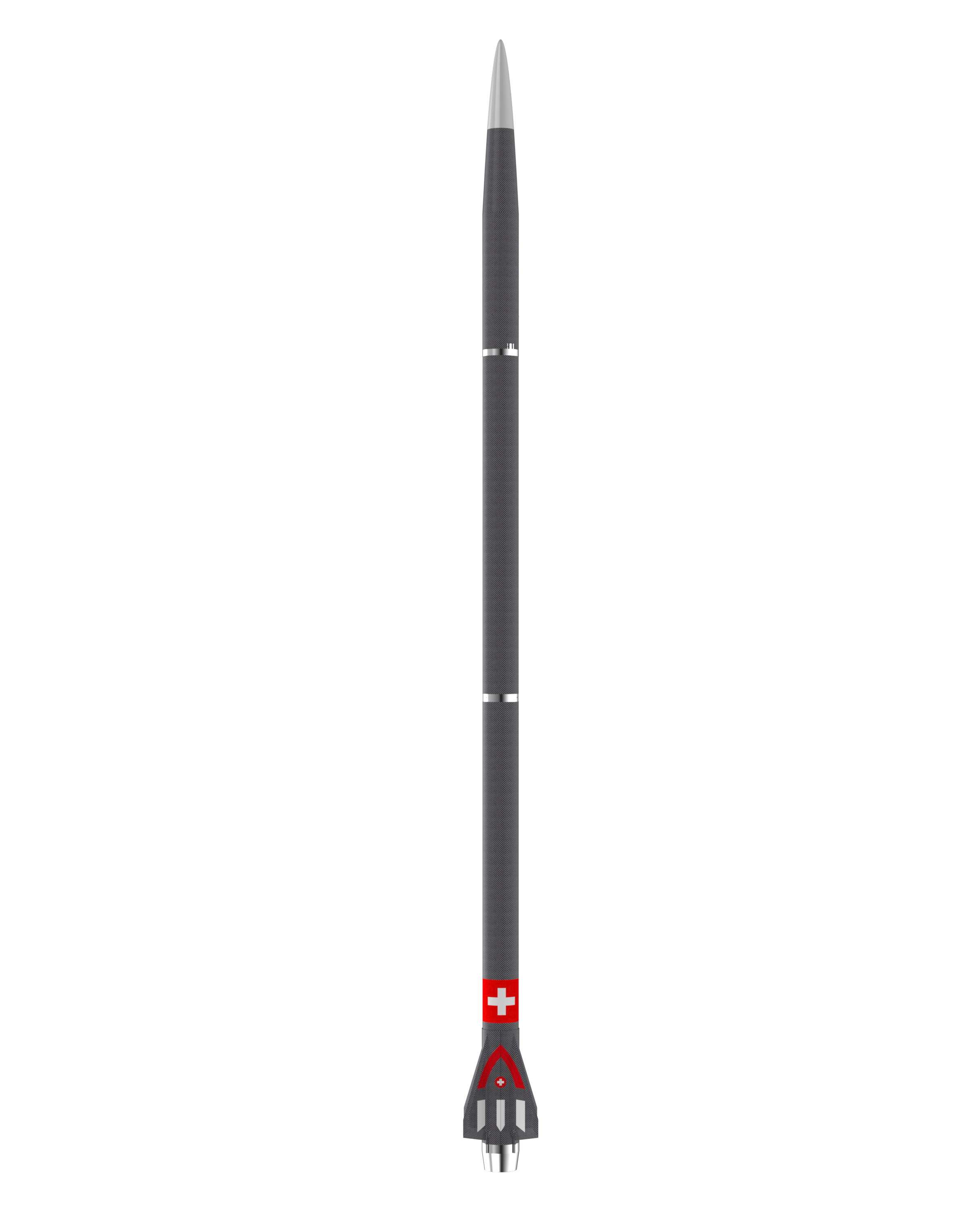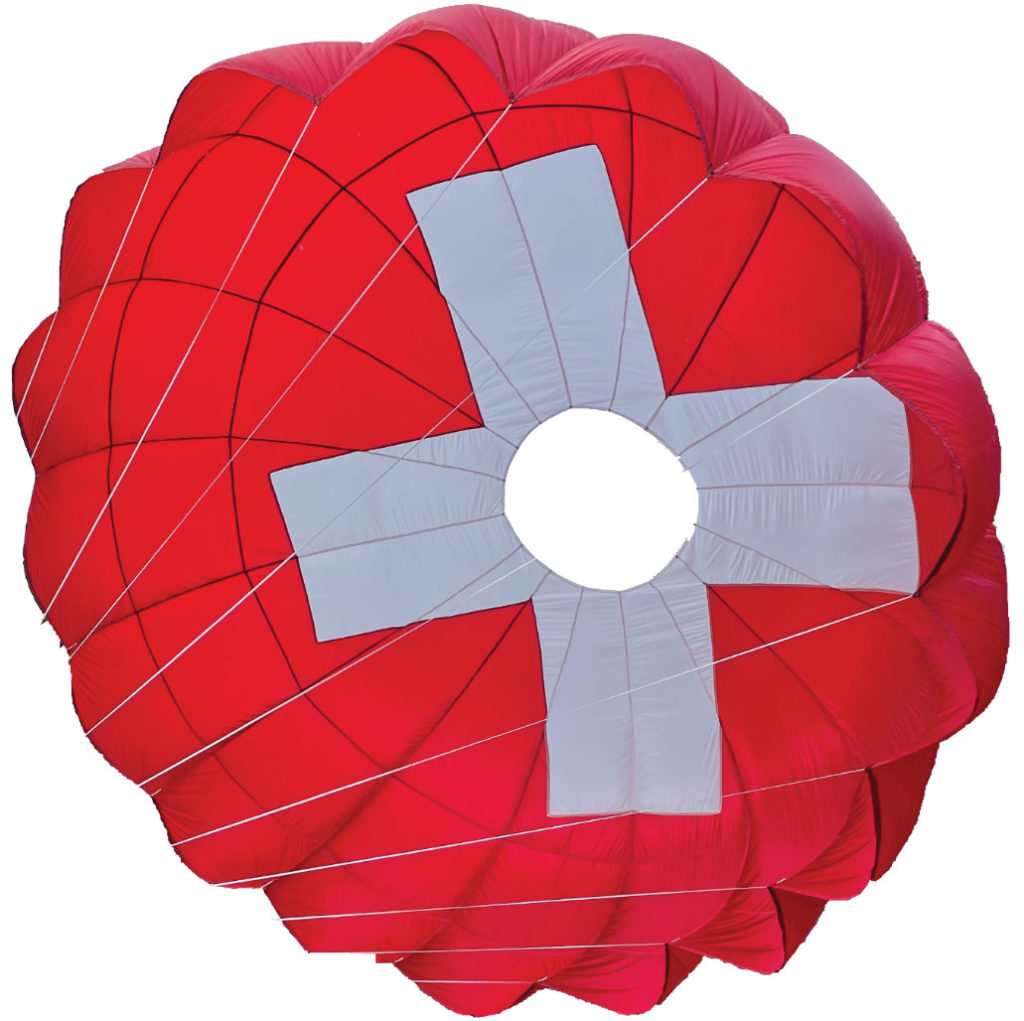WILDHORN - COMPETITION
Wildhorn is the first supersonic of the association. Its goal is to break the sound barrier and reach an apogee of 9’000 m. It will launch at Euroc 2022 (European Rocketry Challenge) in Portugual to defend the title of European Champion of the association. Entirely in carbon fibre, Wildhorn is going to be EPFL Rocket Team’s most optimized rocket ever designed until now. Lightweight, sturdy and well balanced for supersonic speed, Wildhorn’s planning to weigh 24 kg for a length of 3,1 m.
MAXIMUM REACHABLE SPEED AND HEIGHT
WILDHORN AND ITS INNOVATIONS
SUPERSONIC STRUCTURE

Breaking the sound barrier leads to a number of challenges, one of the main ones being to design a structure being able to withstand all of the forces this feat implies.
Due to the high speeds the rocket will achieve, the tip of the nosecone hold out against high temperatures. For this reason, its going to be the only part of the rocket made in PTFE, a semi-cristallin, heat-resistant plastic.
The rest of the rocket is made of carbon fibre, an excellent compromise between resistance and volumic mass. To top it off, the shape of the fins and the nosecone were optimized to reduce the drag force, which would lower the stress applied on the structure as well as the heat generated.
PAYLOAD

Wildhorn’s payload will observe the behavior of a liquid paired with marbles. This is an attempt to find a solution to the sloshing property of liquids. The marbles at play have the same properties as foam which greatly dimishes sloshing during the flight.

SRAD PARACHUTES

Our recovery system is composed of two separate parachutes: a drogue parachute, deployed at the beginning of the descent to slow the rocket down, and the main parachute released once the rocket slowed down enough. Once both parachutes deployed, the rocket can land safely.
Our parachute were entirely imagined and manufactured by the members of the team. They were designed to match Wildhorn’s needs perfectly .
NEW AVIONICS

Wildhorn’s avionics is composed of eight PCBs. One of the main which collect data as atmospheric pressure, acceleration, angular velocity and the rocket’s position.
The radio antenna has also been designed by the members of the team, it allows the rocket to communicate with the ground station during the flight within a range of 9’000 meters.
For the first time in the history of the Rocket Team, cameras will be capturing the flight from the viewpoint of the rocket. A total of four cameras will communicate images live to the ground team.
